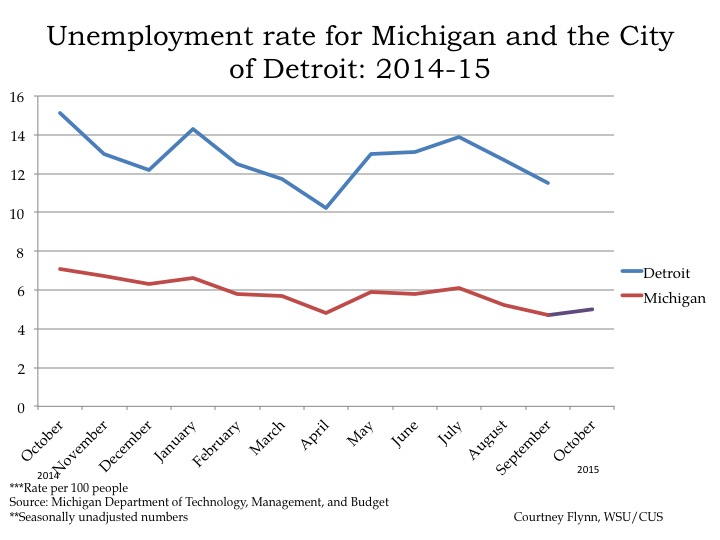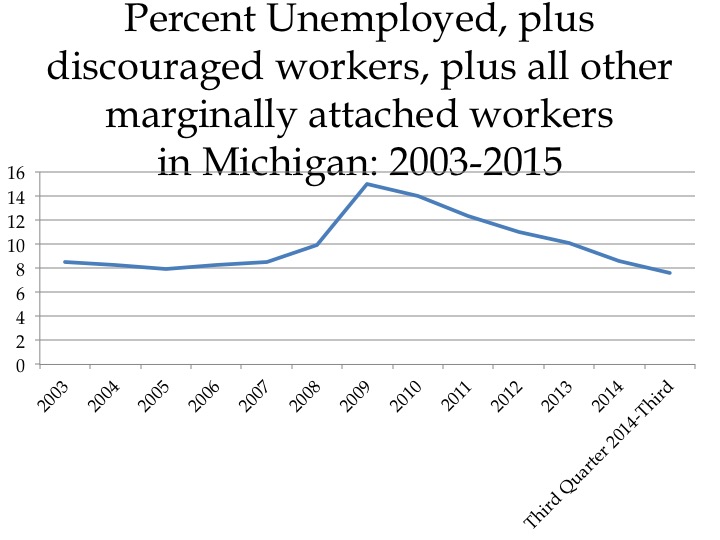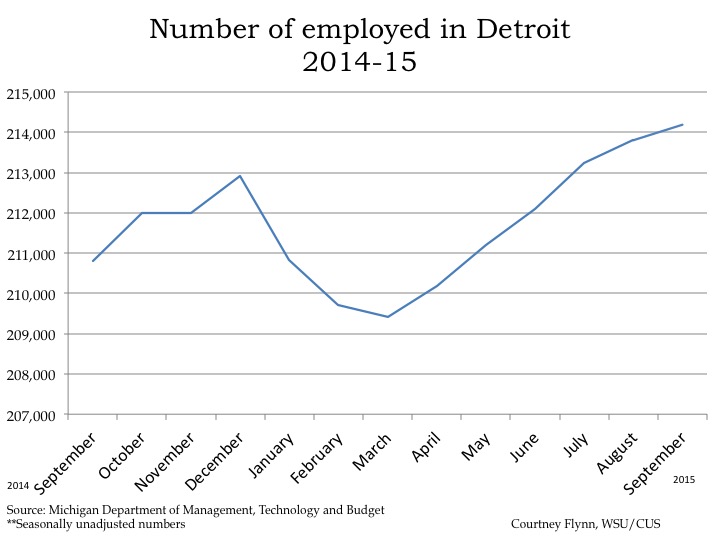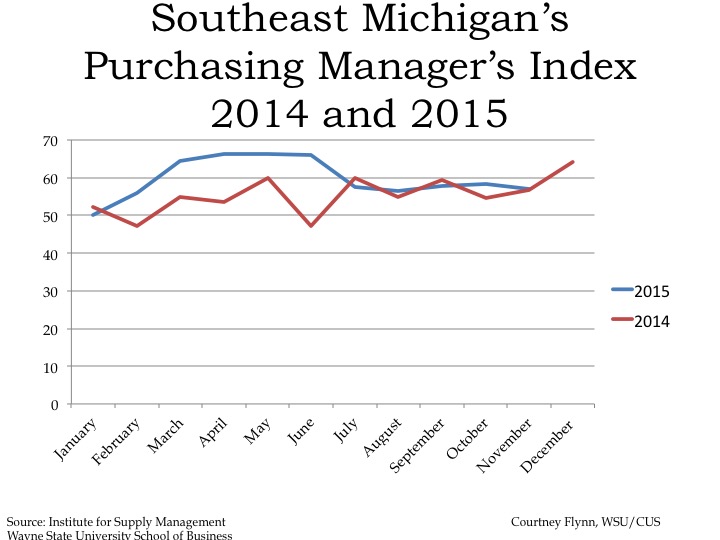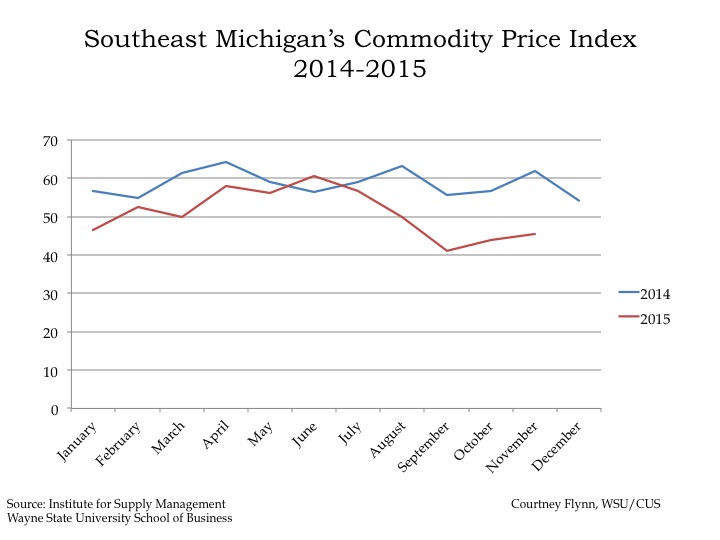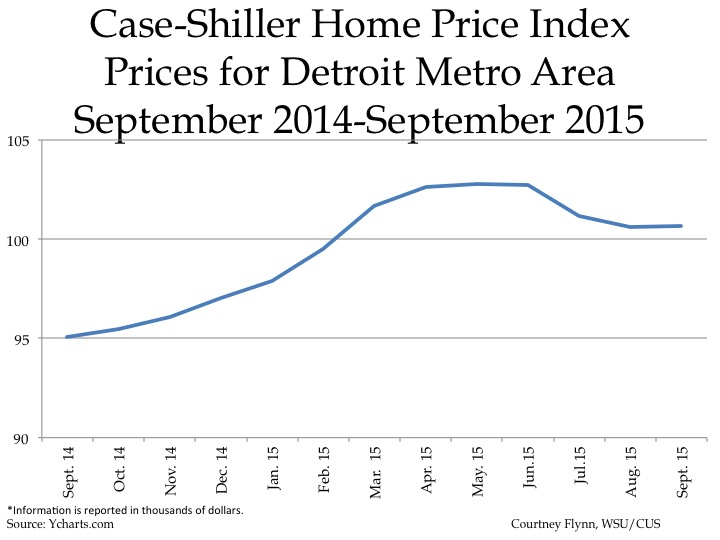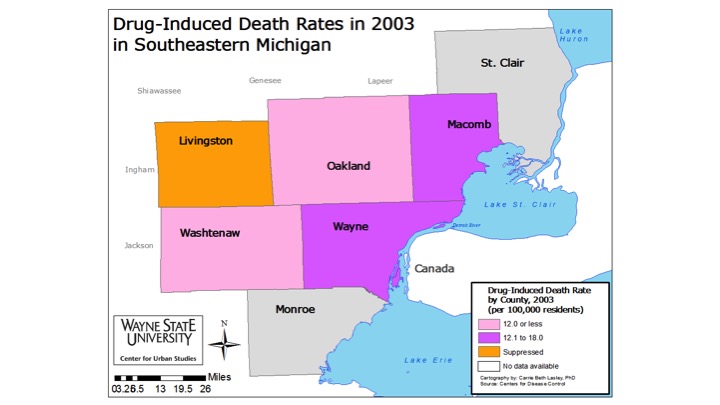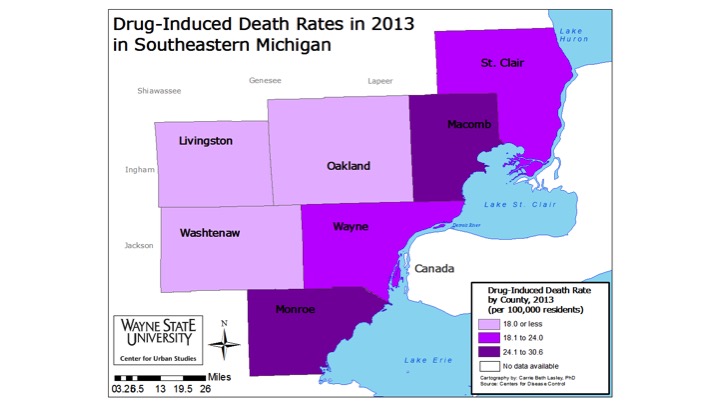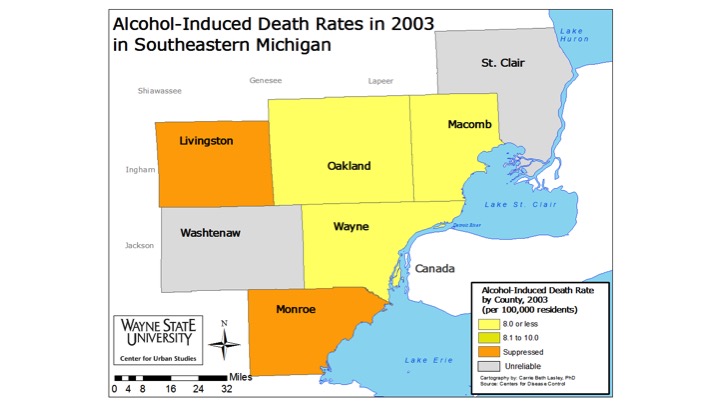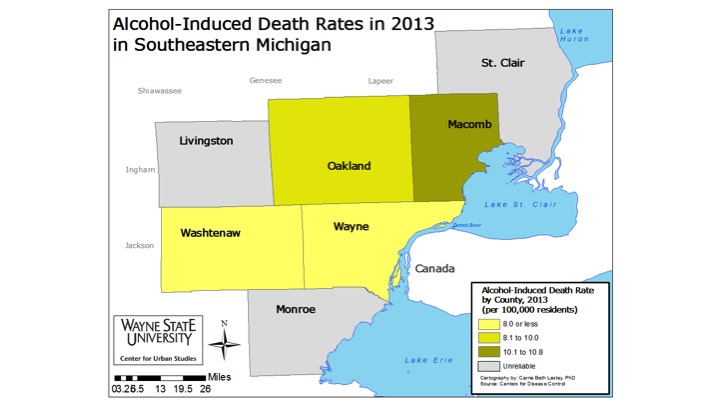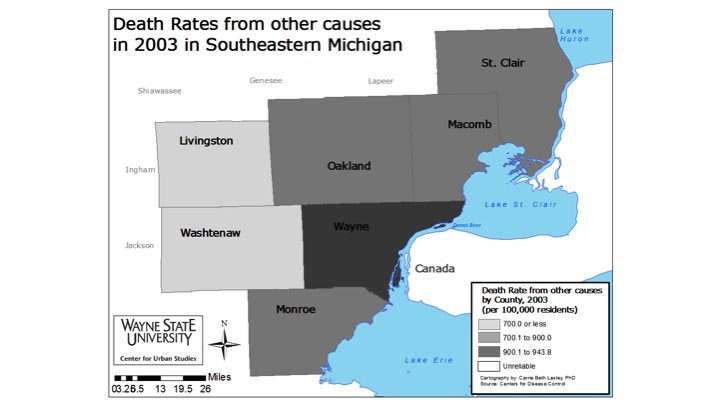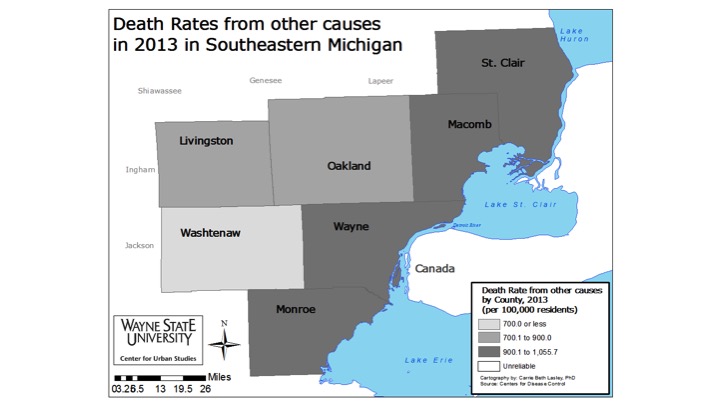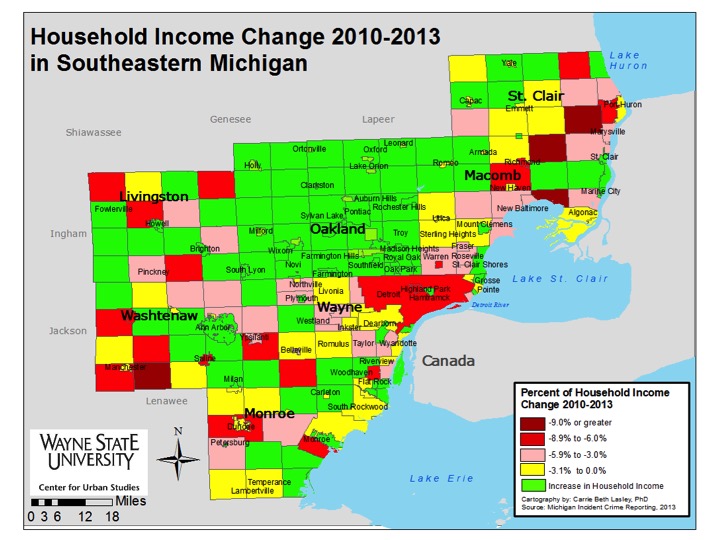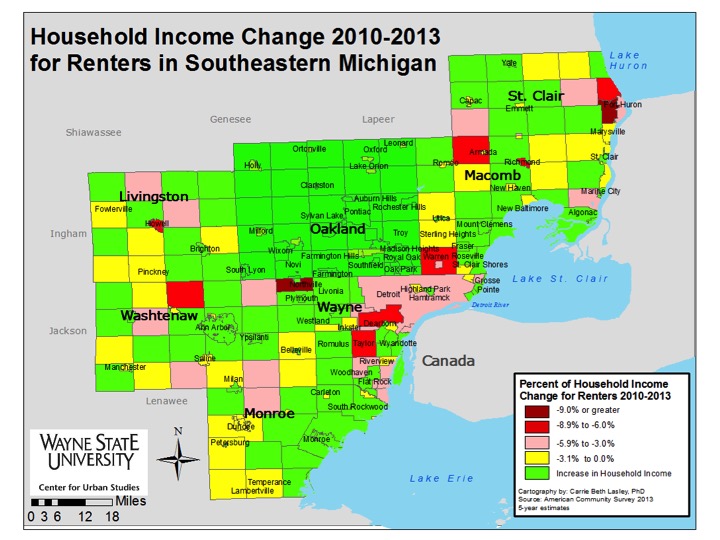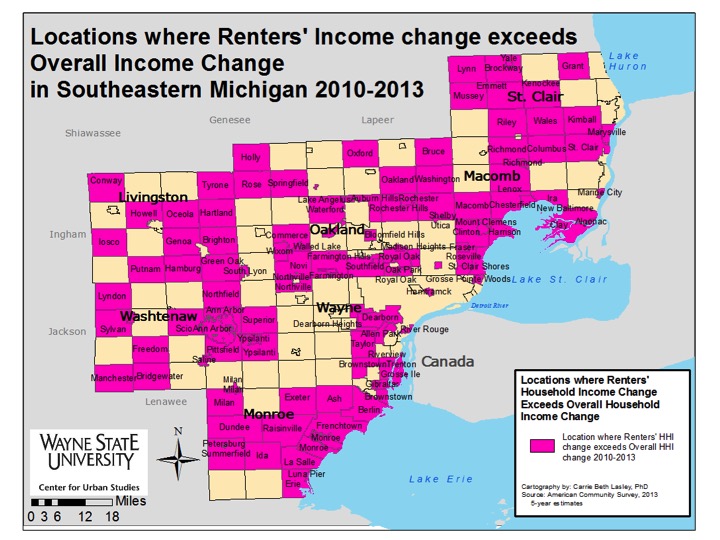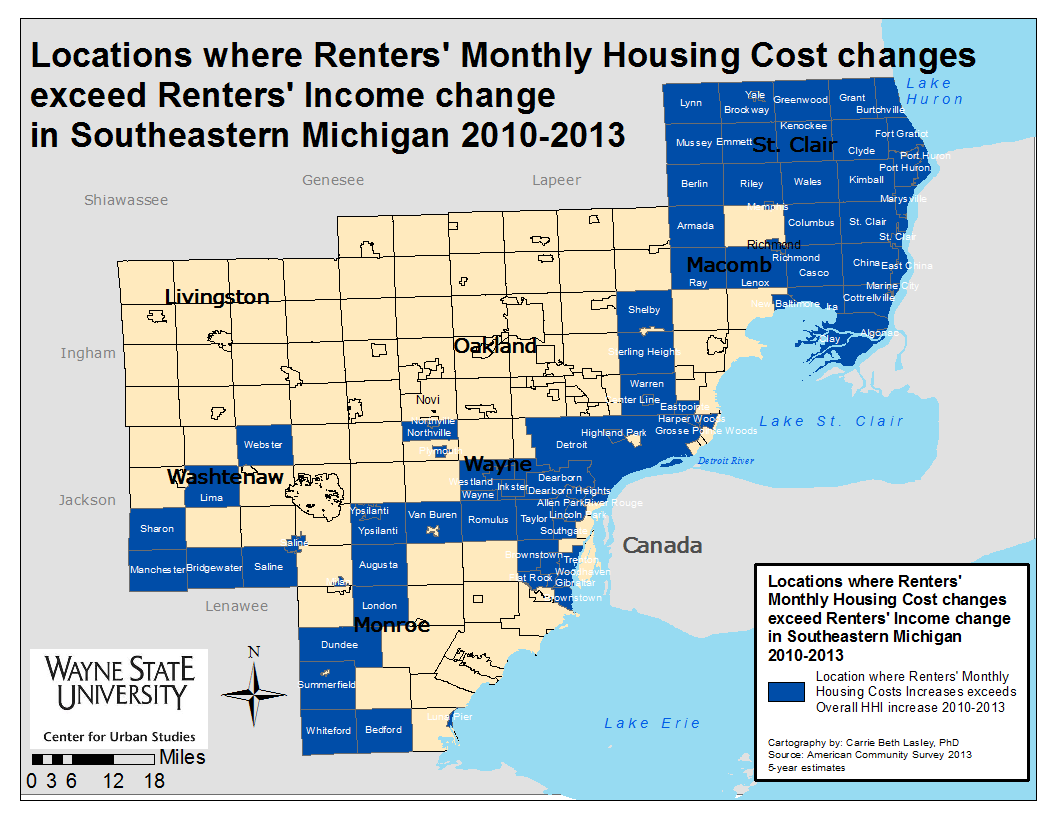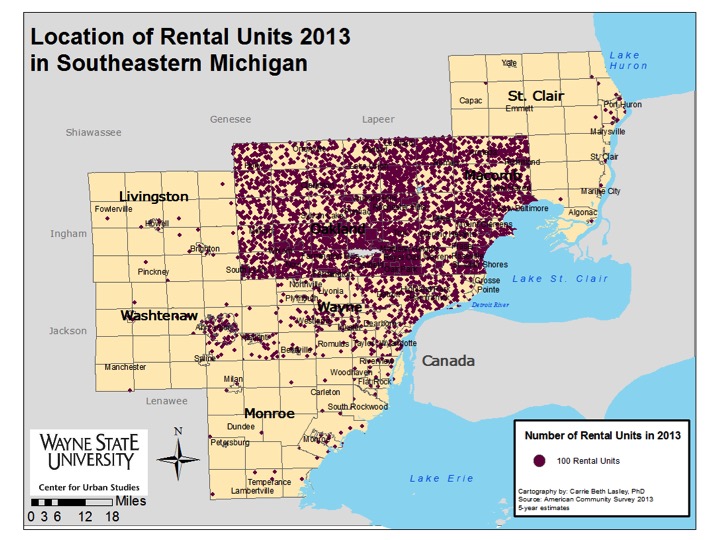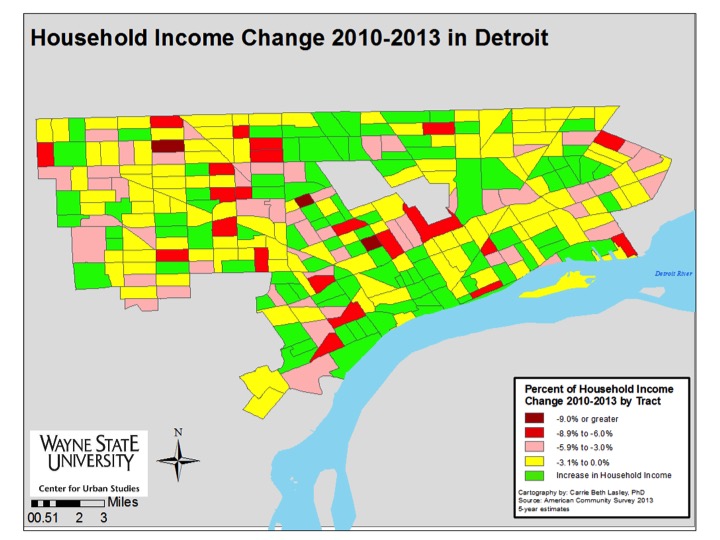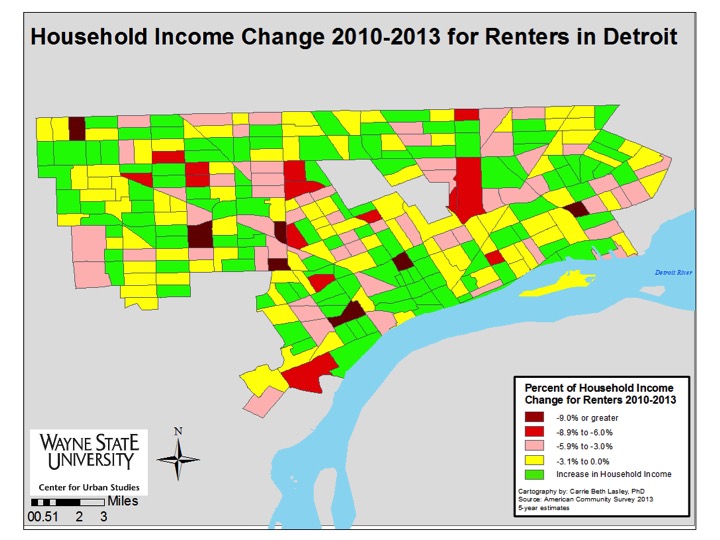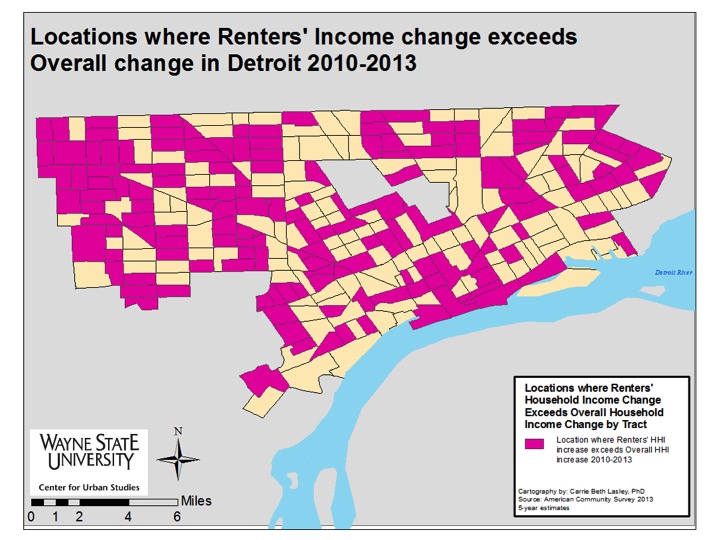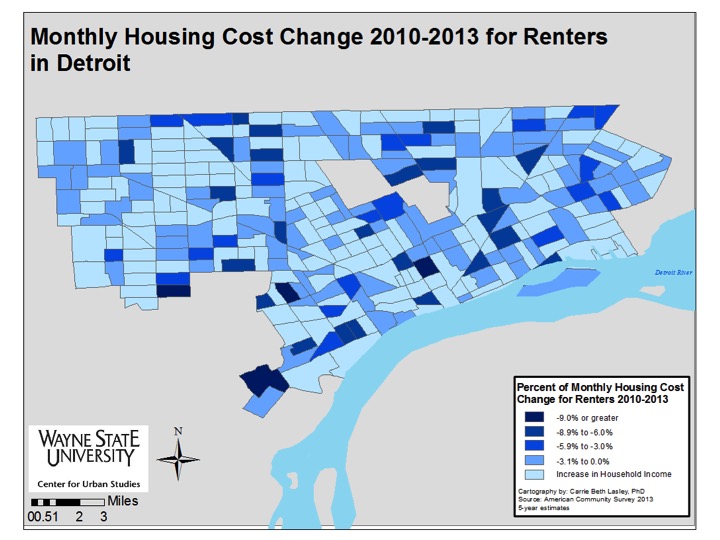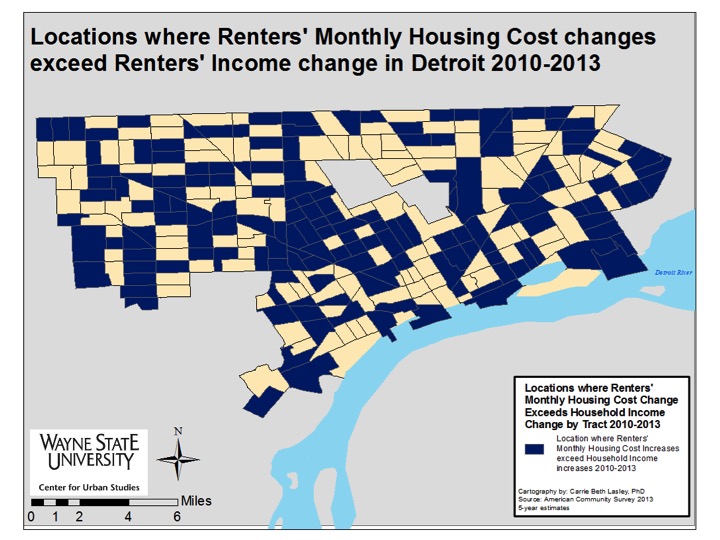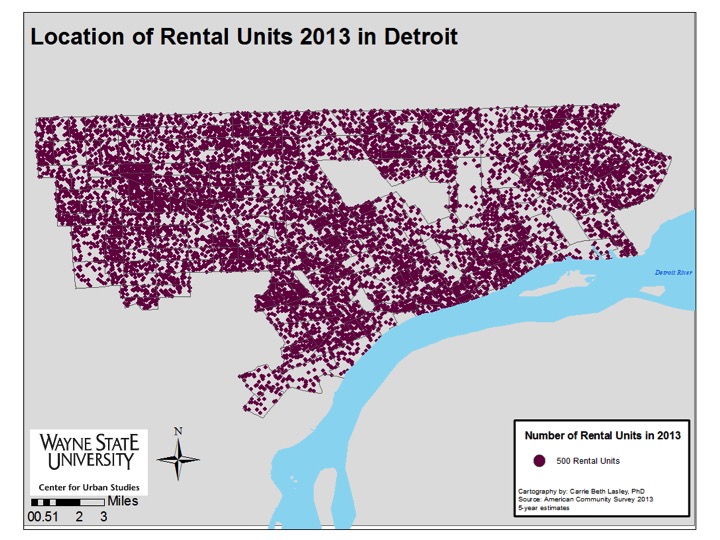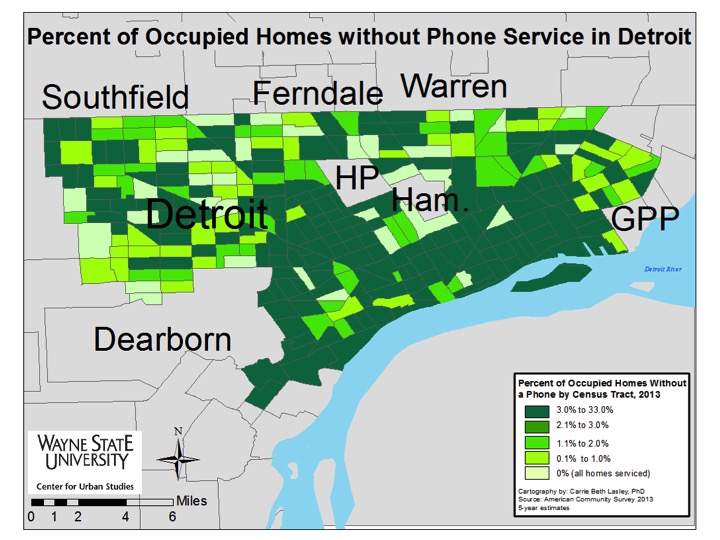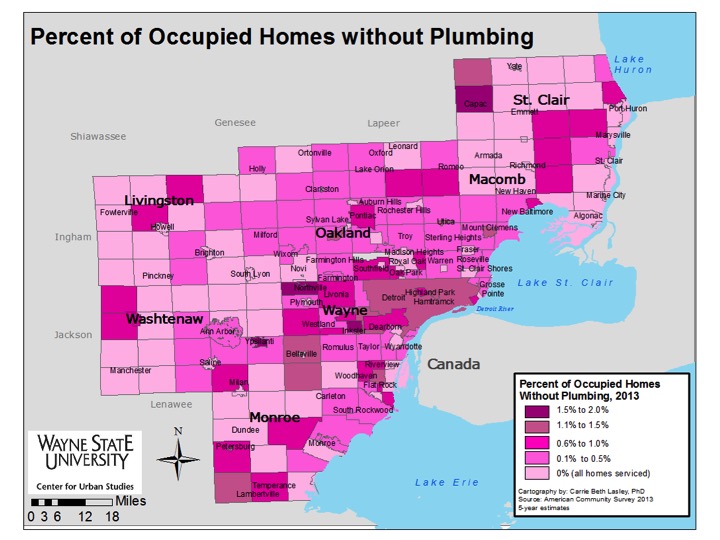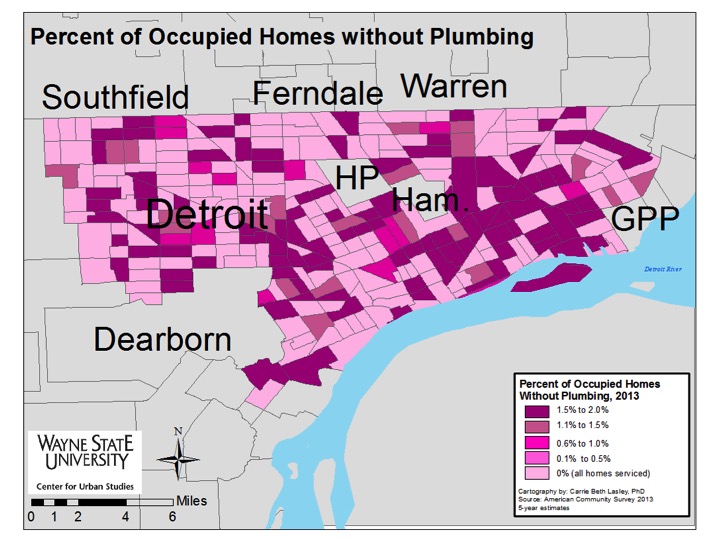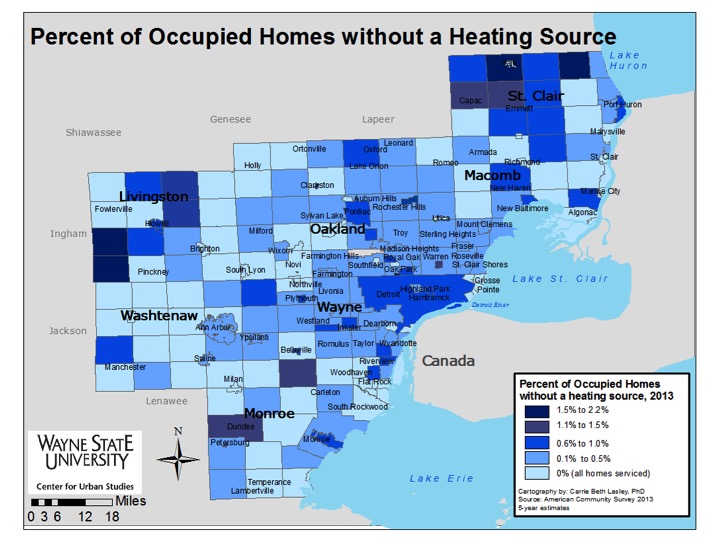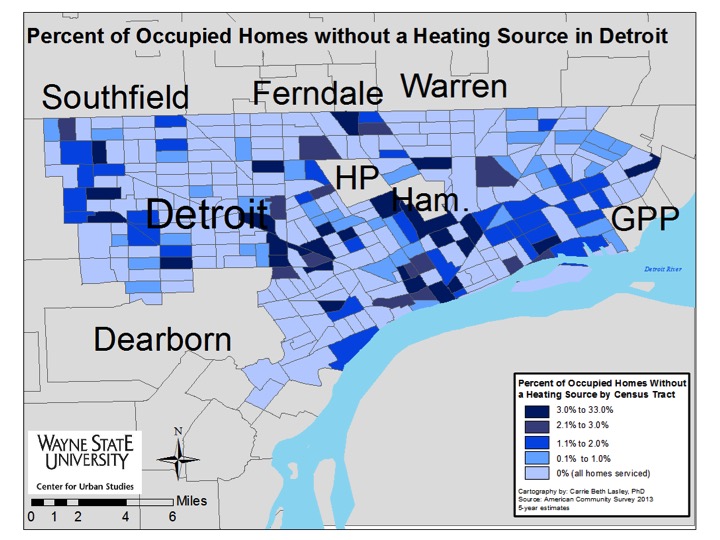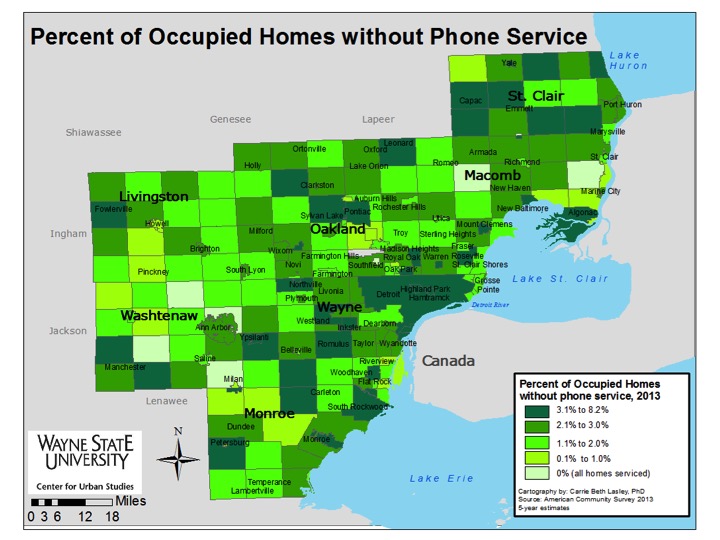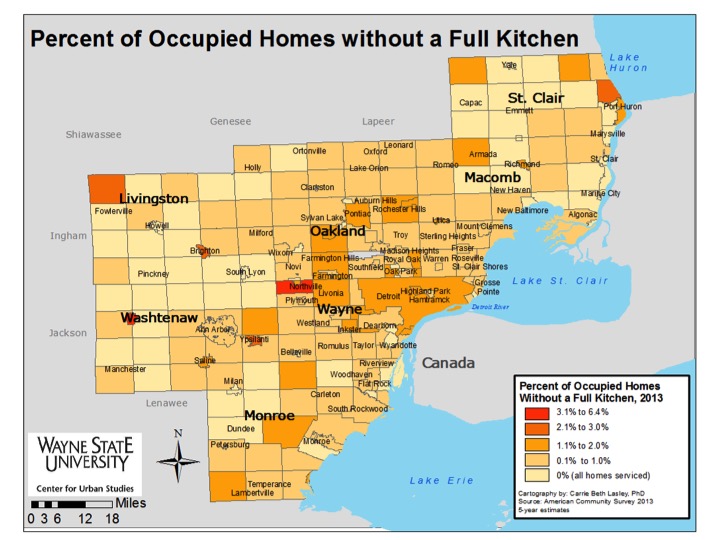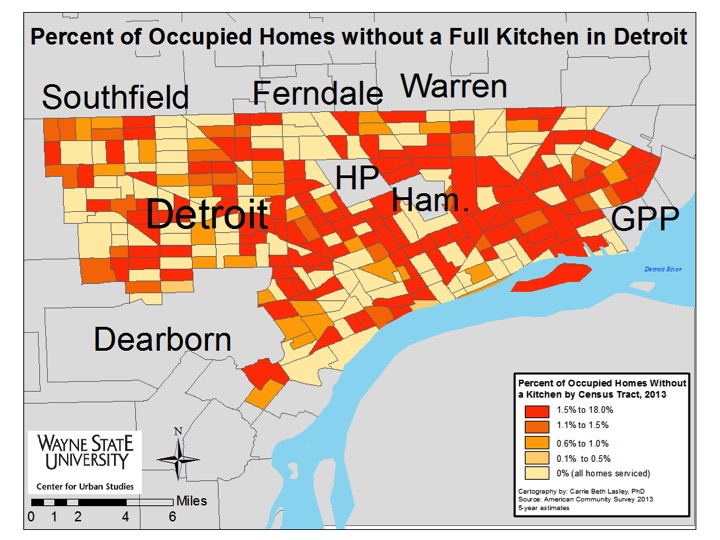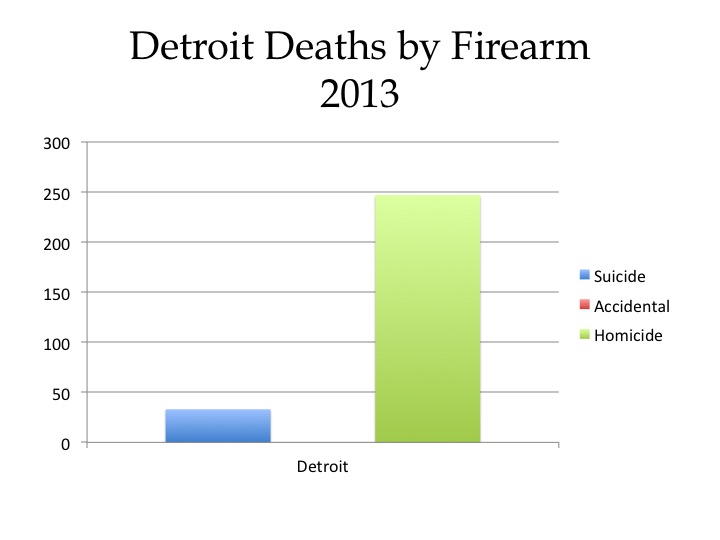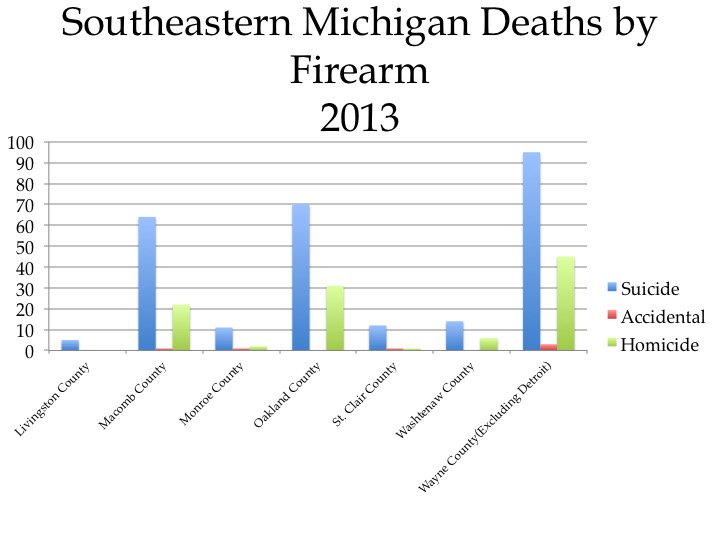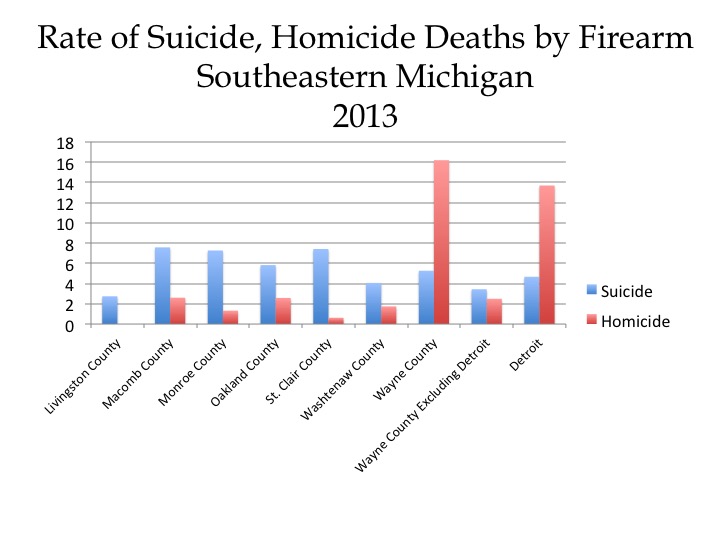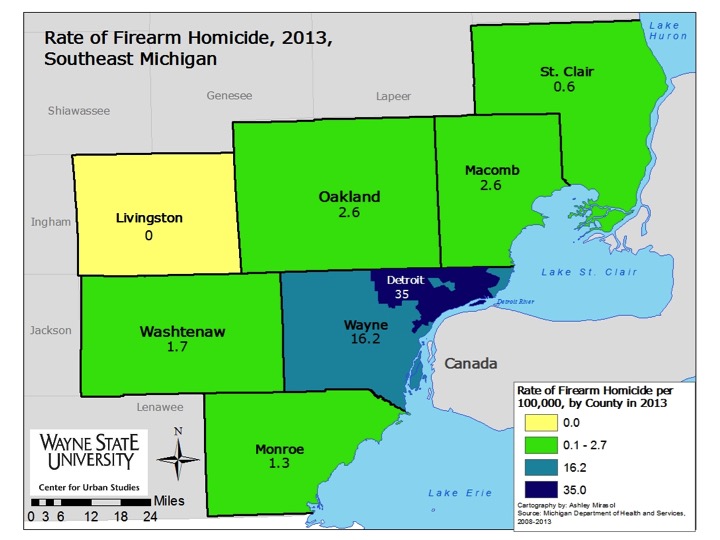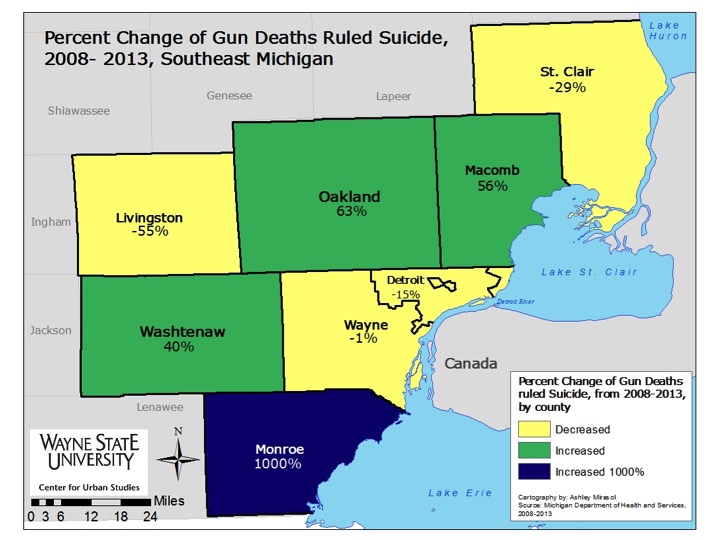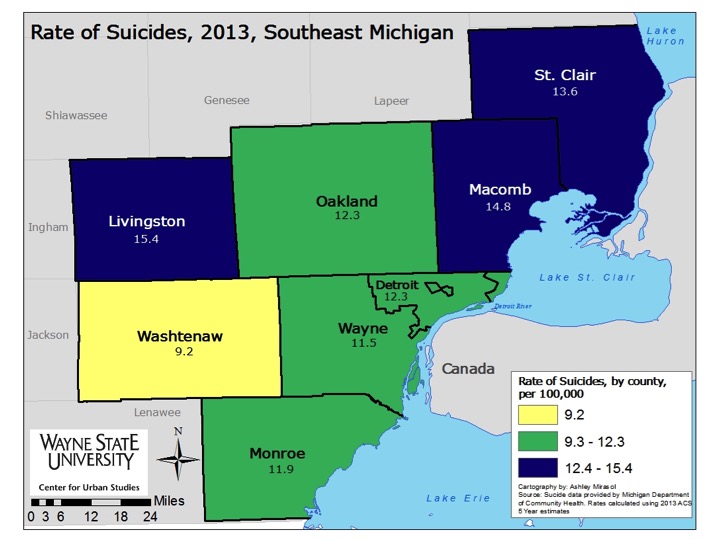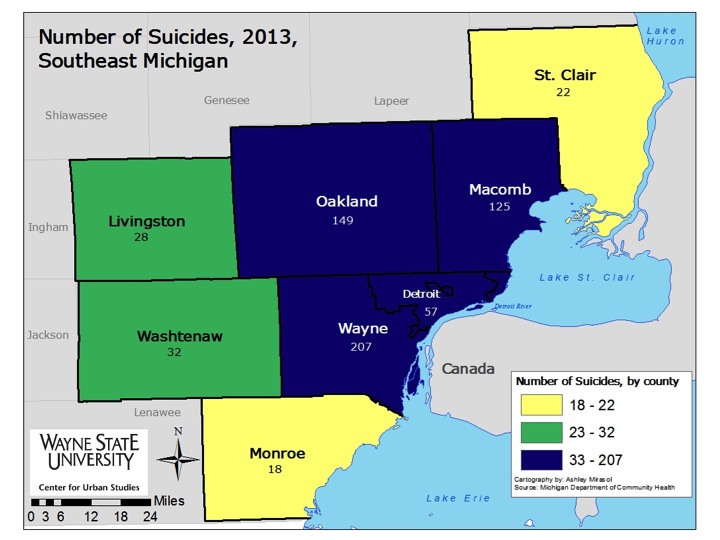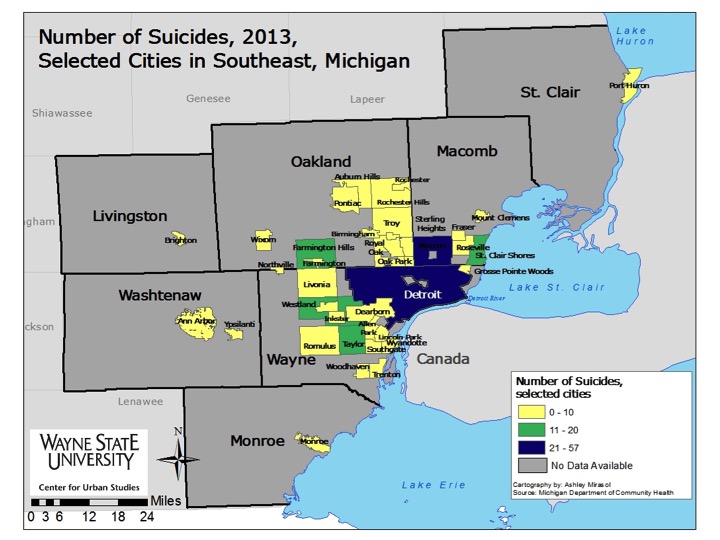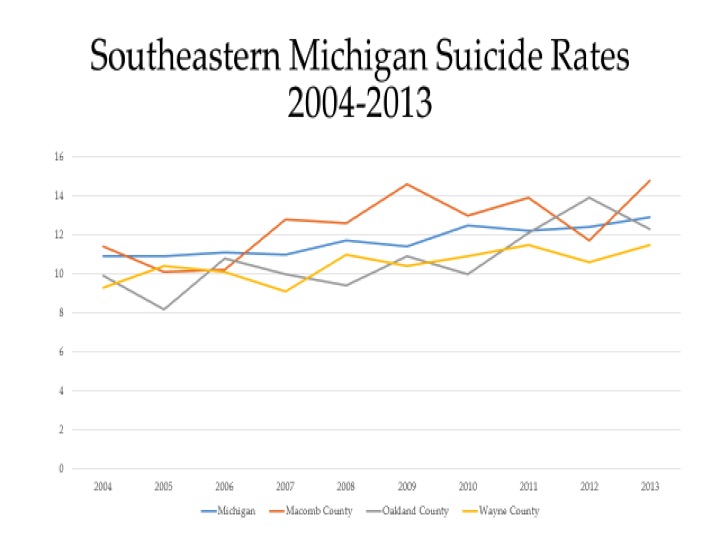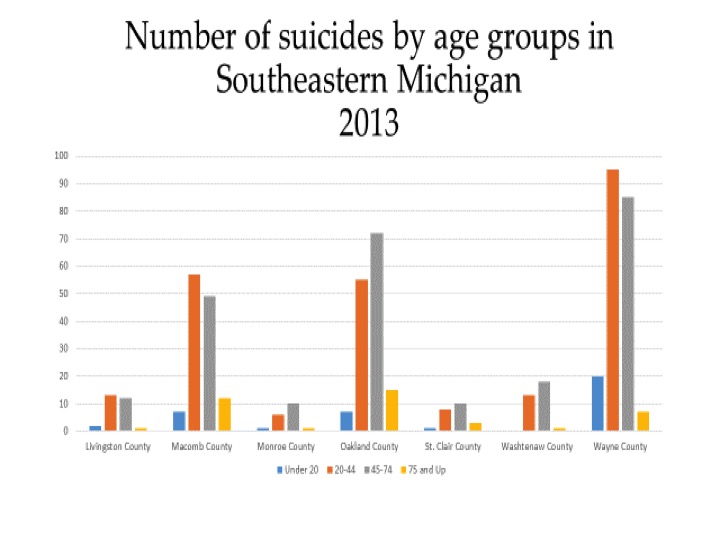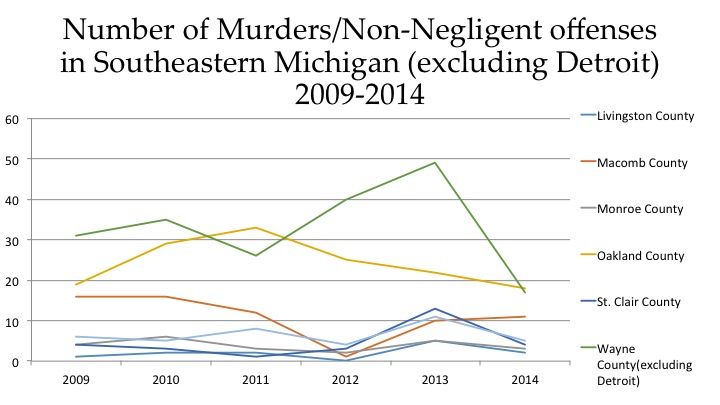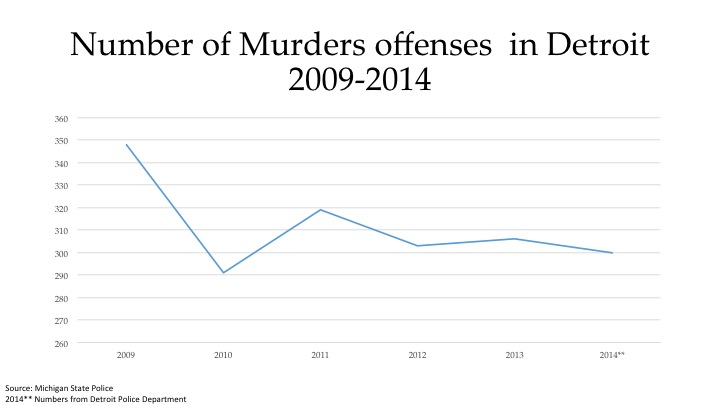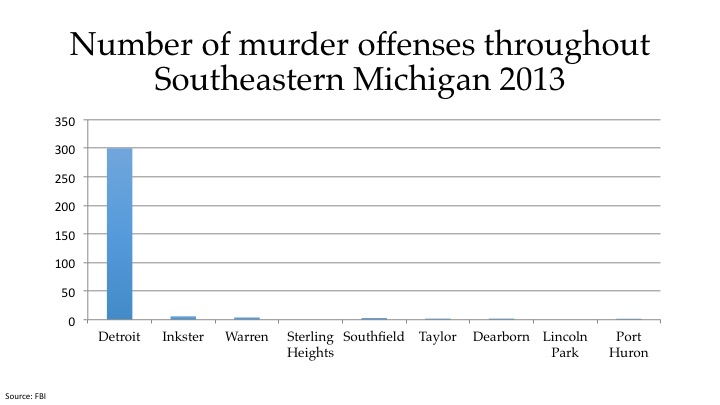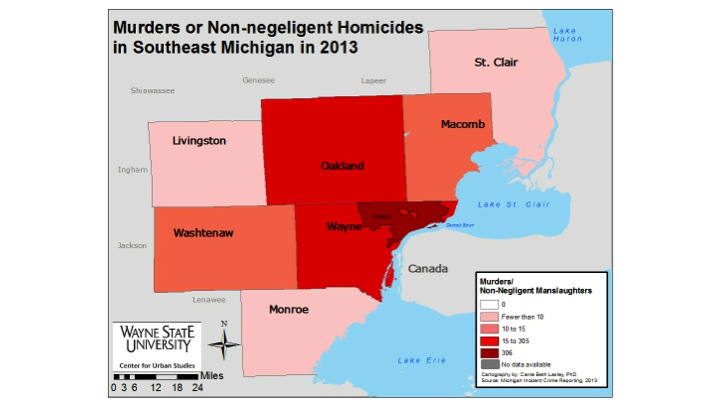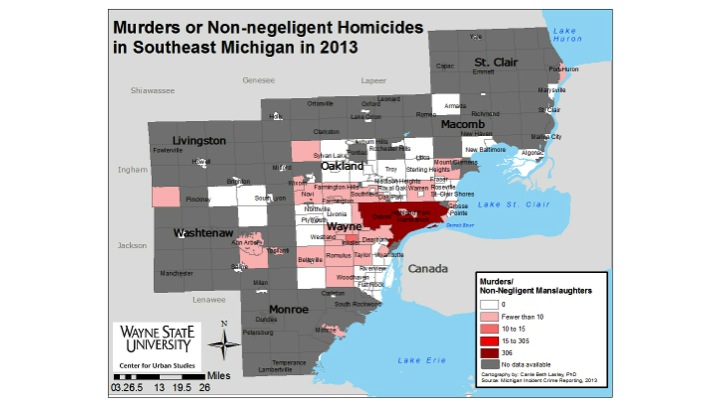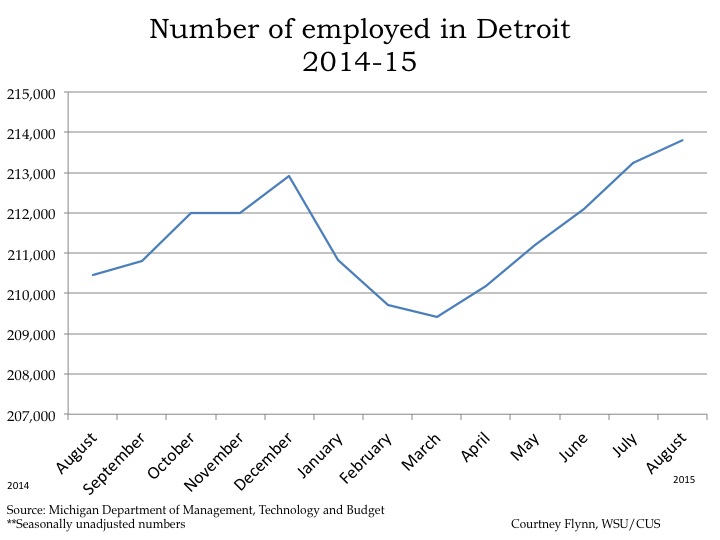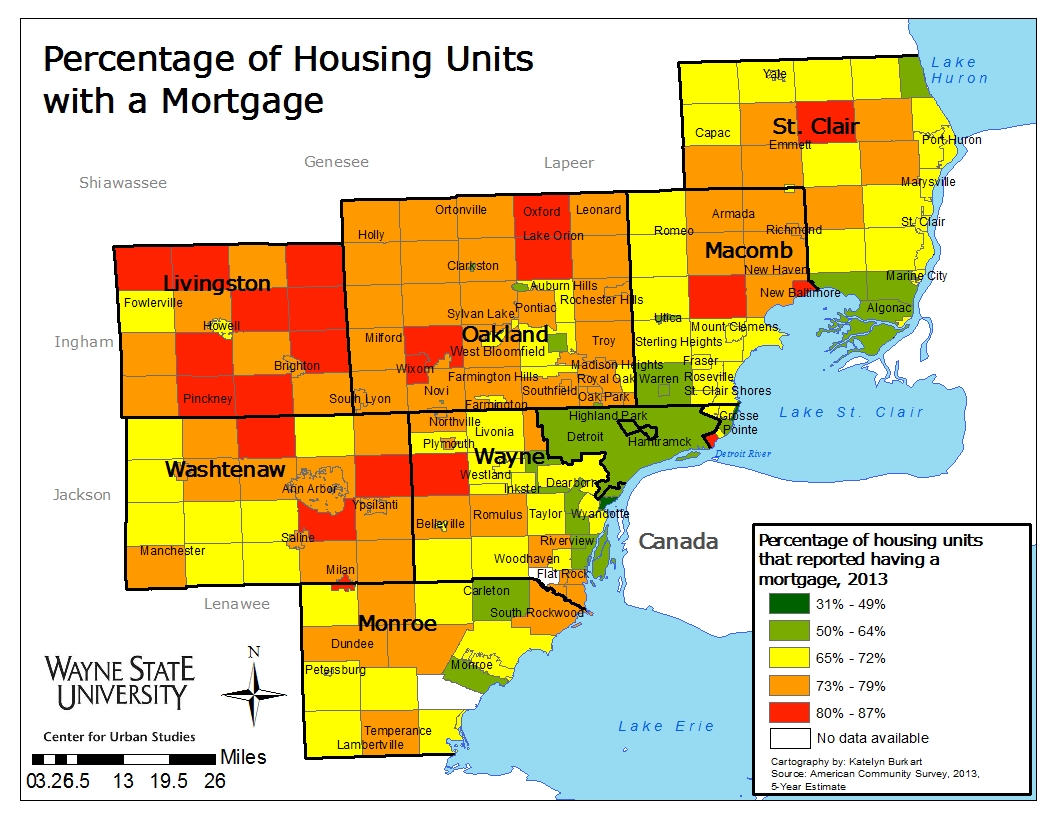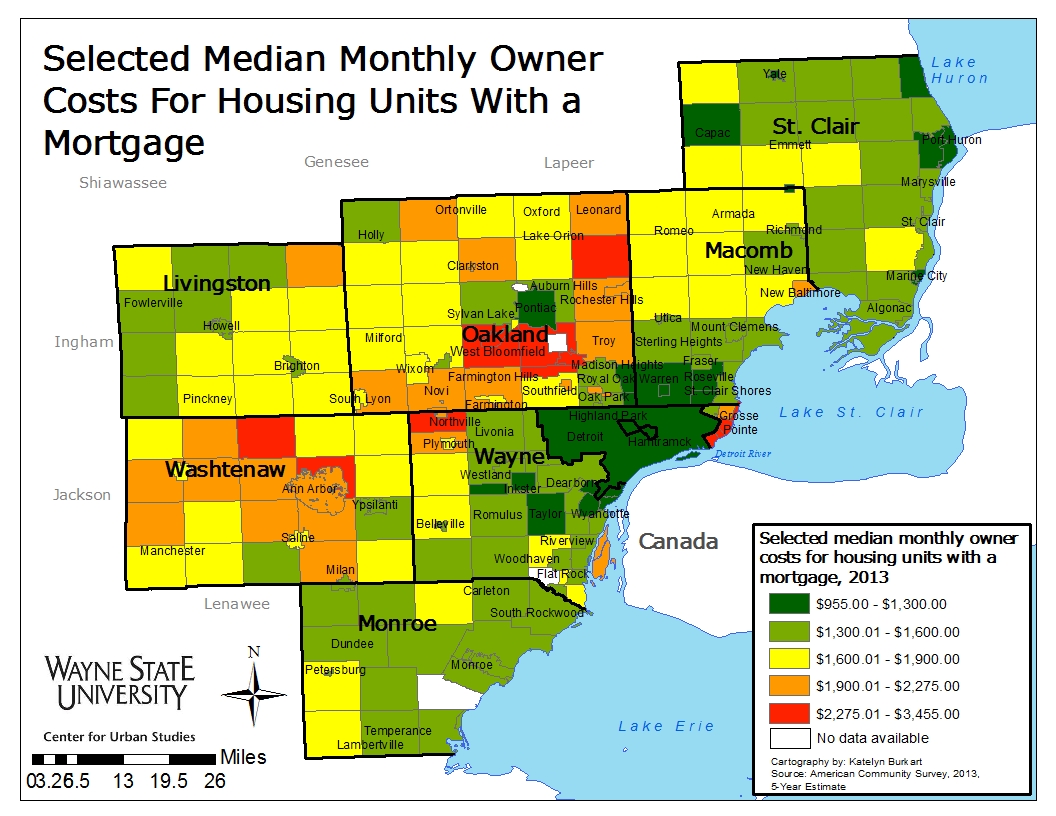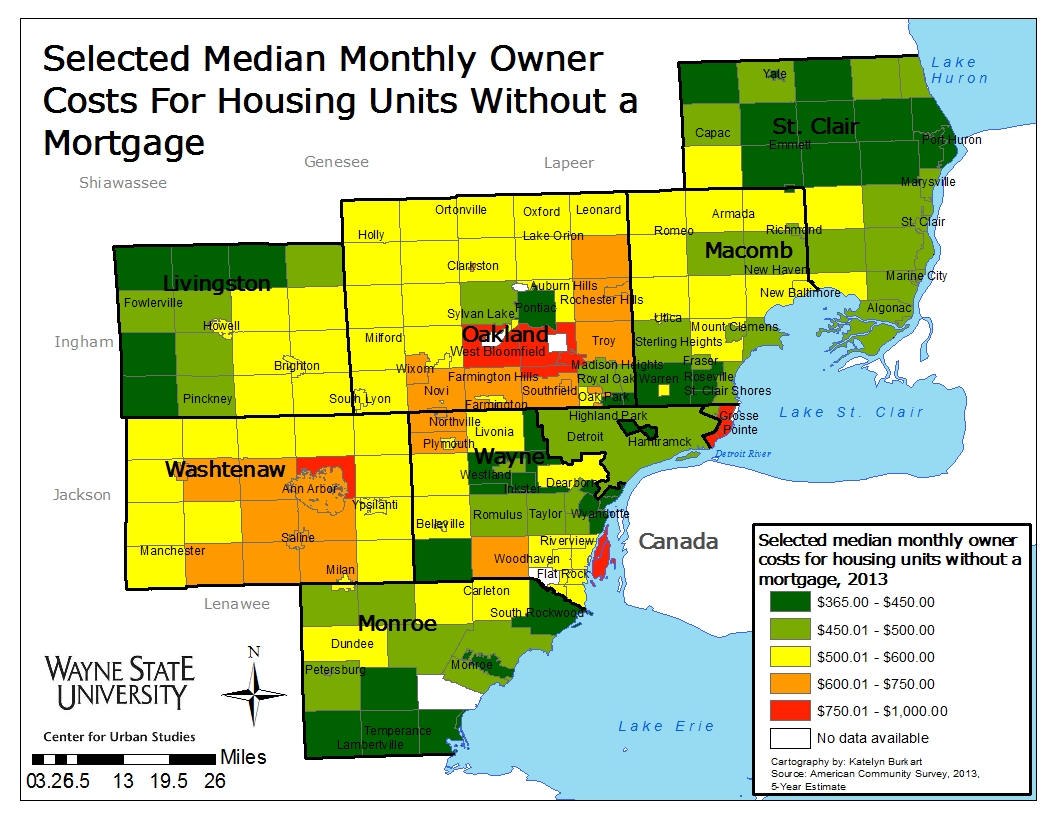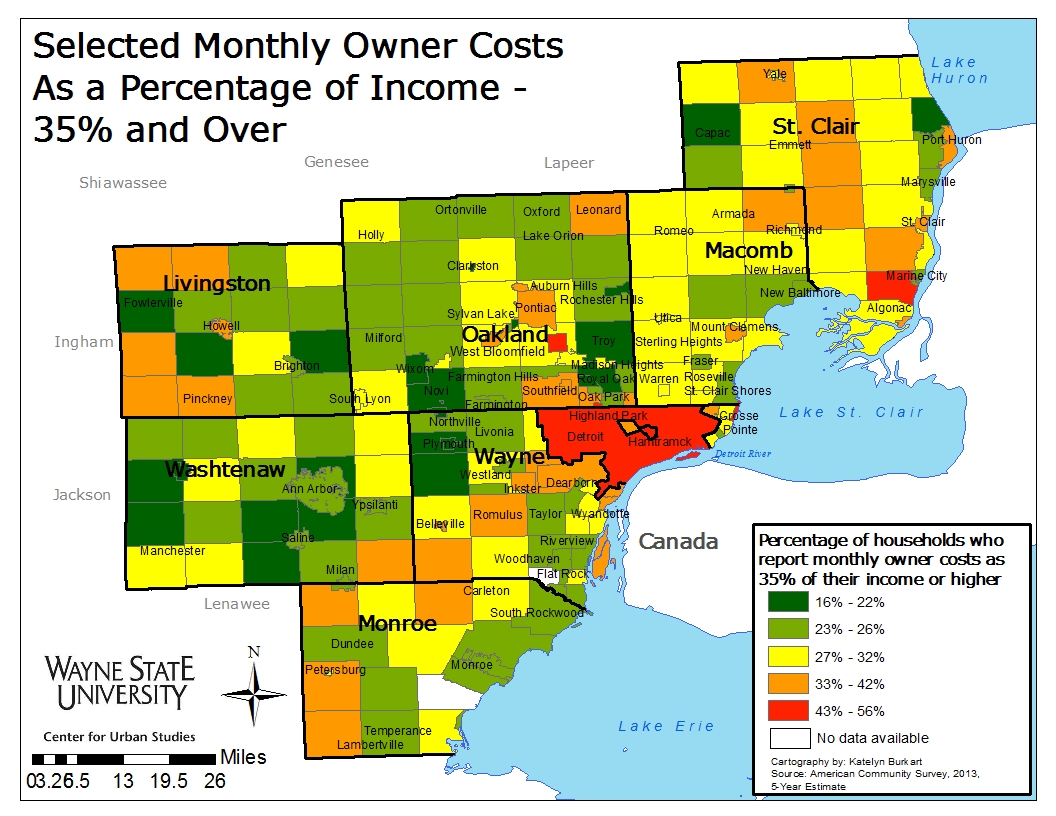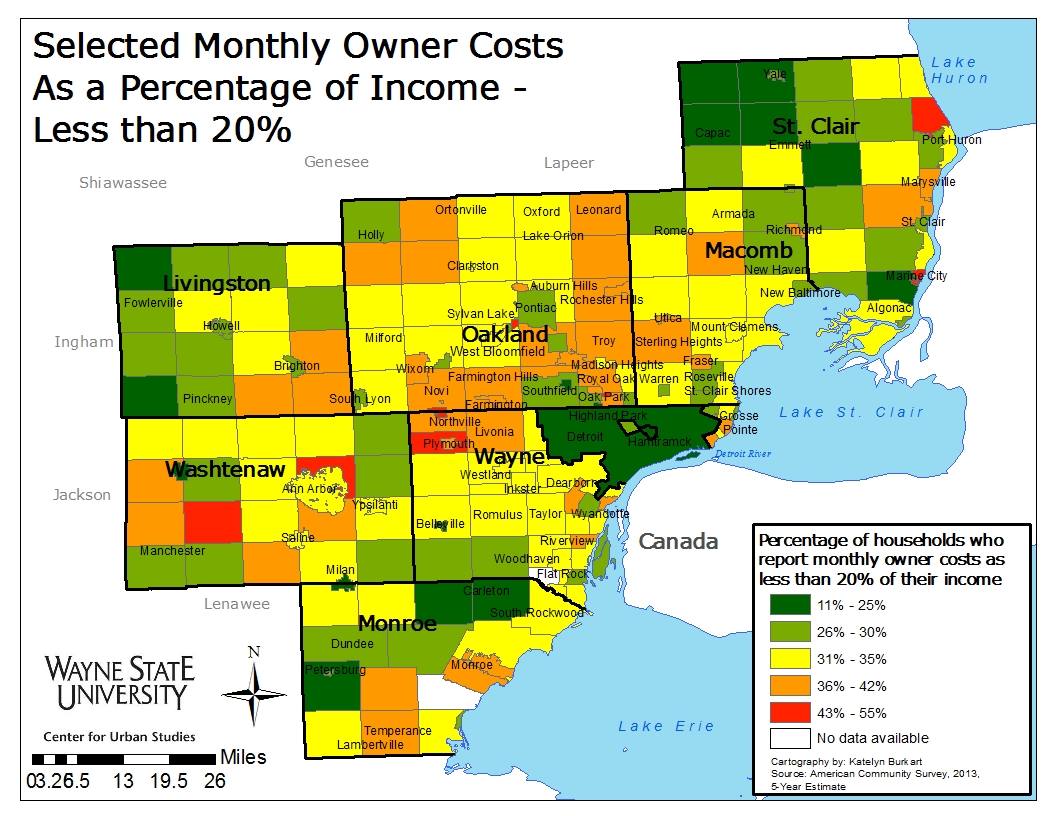- From August 2015 to September 2015, the unemployment rate across the state increased and in the city of Detroit (monthly);
- The Purchasing Manager’s Index for Southeast Michigan decreased from October 2015 to November 2015 (monthly);
- Commodity Price Index increased from October 2015 to November 2015 for Southeast Michigan (monthly);
- Standard and Poor’s Case-Shiller Home Price Index for the Detroit Metropolitan Statistical Area shows home prices are still slowly increasing.
According to the most recent data provided by the Michigan Department of Technology, Management, and Budget, the unemployment rate for the state of Michigan increased from 4.7 percent in September to 5 percent in October. Unemployment in the city of Detroit decreased from 12.7 percent in August to 11.5 percent in September.
Displayed above is an alternative measure of labor utilization in the state of Michigan at an annual basis. This measure of unemployment, which includes discouraged workers and marginally attached workers, shows that this too has been decreasing. This measure of labor utilization peaked in 2009 at 15 and by the third quarter of 2015 it decreased to 7.6. From 2009 to 2015 there has been a steady decrease.
From August to September, the number of people employed in the city of Detroit increased by 386, for a total of 214,192 people employed in the city in September. From March to September, the number of people employed in the city increased by 4,775. In the last year, the month of March had the lowest number of people employed in the city of Detroit.
The above chart shows the number of people employed in the auto manufacturing industry in the Detroit Metropolitan Statistical Area (MSA) (Detroit-Warren-Livonia) from August 2014 to August 2015. From August to September the number of people employed in this industry increased by 1,400, to a total of 106,700. This number is 11,300 more than the number of workers employed in the auto manufacturing industry in September of 2013.
The Purchasing Manger’s Index (PMI) is a composite index derived from five indicators of economic activity: new orders, production, employment, supplier deliveries, and inventories. A PMI above 50 indicates the economy is expanding.
According to the most recent data released on Southeast Michigan’s Purchasing Manager’s Index, the PMI for November 2015 was 57.1, a decrease of 1.3 of a point from the prior month. It was also an increase of .3 from November of 2014.
The Commodity Price Index, which is a weighted average of selected commodity prices, was recorded at 45.5 points in November 2015, which was 1.7 points higher than the previous month and 16.3 points lower than November 2014.
The above charts show the Standard and Poor’s Case-Shiller Home Price Index for the Detroit Metropolitan Statistical Area. The index includes the price for homes that have sold but does not include the price of new home construction, condos, or homes that have been remodeled.
According to the index, the average price of single-family dwellings sold in Metro Detroit was $100,680 in September 2015. This was an increase of $5,610 from September of 2014 and an increase of $50 from August of 2015.
